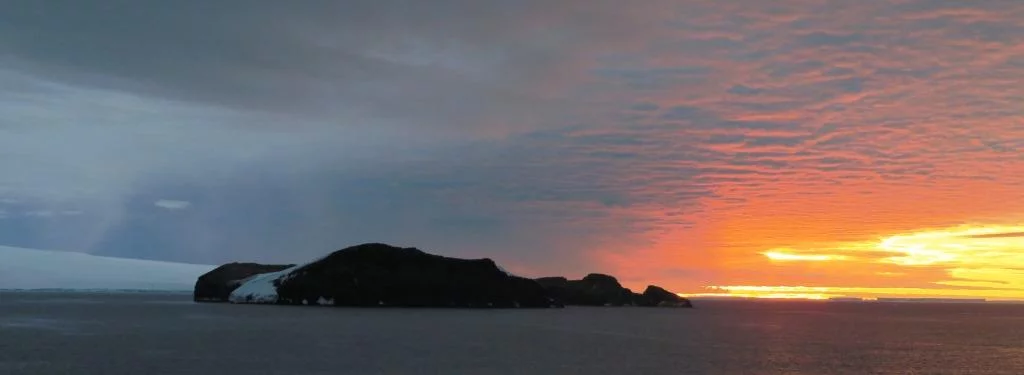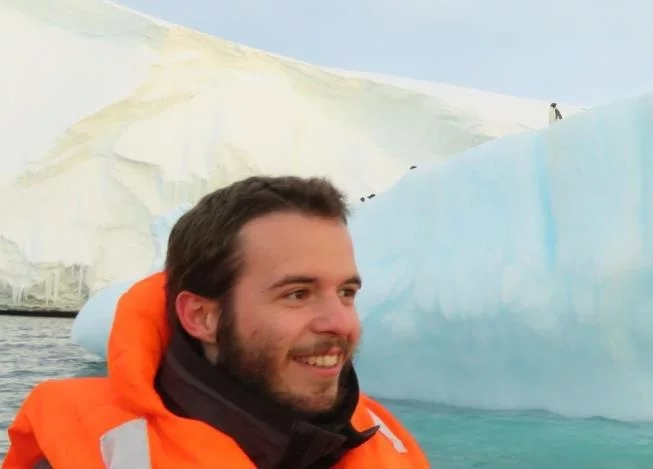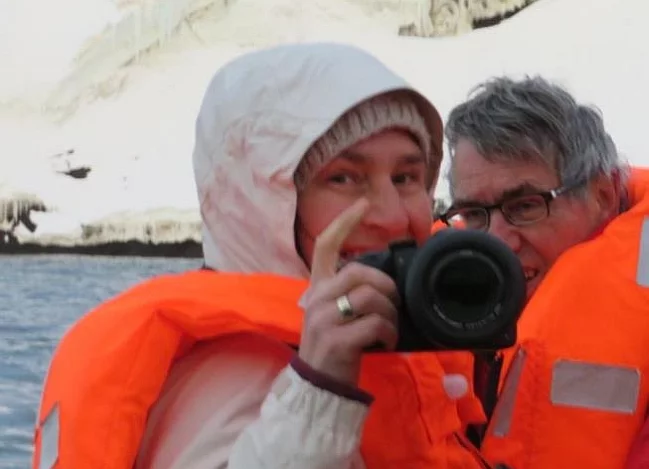Antarctic Blog
15 February 2017
Siple Island
by Julia Schmale
Position 73°39′S, 125°0′W
Shortly after leaving the Balleny Islands, we arrived at Scott Island. Scott Island is just a couple of soccer fields big, a 55 meter high volcanic rock sticking out of the Southern Ocean. Operations where quick, since again there was no beach, so samples were only collected on top of the island.
Half a day later we were back to the open ocean. Eight days of voyage would have been in front of us to arrive at Peter 1st Island. But satellite images showed that the sea ice conditions around that area were unfavorable. It would have cost us several days to get close enough to the island for measurements. So we took the decision to explore the area around Siple Island, 73 ° S, which was close by and normally would have been surrounded by sea-ice, a unique opportunity. The decision turned out to be the right one. Upon arrival late in the evening the weather was good. The terrestrial groups took samples the very evening from two small islands just next to Siple which is connected to the continent via an ice-shelf.
Position 73°39′S, 125°0′W
Shortly after leaving the Balleny Islands, we arrived at Scott Island. Scott Island is just a couple of soccer fields big, a 55 meter high volcanic rock sticking out of the Southern Ocean. Operations where quick, since again there was no beach, so samples were only collected on top of the island.
Half a day later we were back to the open ocean. Eight days of voyage would have been in front of us to arrive at Peter 1st Island. But satellite images showed that the sea ice conditions around that area were unfavorable. It would have cost us several days to get close enough to the island for measurements. So we took the decision to explore the area around Siple Island, 73 ° S, which was close by and normally would have been surrounded by sea-ice, a unique opportunity. The decision turned out to be the right one. Upon arrival late in the evening the weather was good. The terrestrial groups took samples the very evening from two small islands just next to Siple which is connected to the continent via an ice-shelf.
The next morning, conditions were close to perfect. The ice-core and radar group together with me were flown to Siple mountain, where we performed our usual measurements on the glacier, this time extracting 24 meters of ice-core. During the day, clouds faded away and uncovered the top of the volcano which is more than 3000 meters high. To our knowledge the summit had never been climbed, so our mountain guide and the expedition leadership set off with a helicopter to visit the summit and take a more accurate altitude measurement than the currently provided one.
Meanwhile the terrestrial groups visited an Adelie penguin rookery with the zodiacs. There had been mentioning of a rookery, but by no means had the available information described the large extent of the colony. Like on the Balleny Islands, an aerial survey was carried out to photograph and count the penguins and other sea-birds gathering nearby.
Meanwhile the terrestrial groups visited an Adelie penguin rookery with the zodiacs. There had been mentioning of a rookery, but by no means had the available information described the large extent of the colony. Like on the Balleny Islands, an aerial survey was carried out to photograph and count the penguins and other sea-birds gathering nearby.
The rookery was an obvious sign, even for non-biologists, that the area was highly productive. The water was turquoise green and lots of phytoplankton was measured. However, opposed to our observations near the Mertz glacier, there were no emissions of dimethyl-sulfide (DMS) that were converted to methyl-sulfonic-acid (MSA) or sulfuric acid that we could track with our chemical aerosol measurements; nor were there elevated isoprene emissions. One of the possible explanations is that the lifecycle of the bloom was in an early stage where only little biological decay occurs, while at Mertz the bloom might have been at a late stage with many decay products that lead to elevated emissions. These case studies need to be analyzed in more detail, however, they is an indication that a simple chlorophyll index might not be sufficient to predict DMS emissions from that bloom contributions to aerosol. What we did observe, however, were IO3– clusters.
back to all blog entries
back to all blog entries




